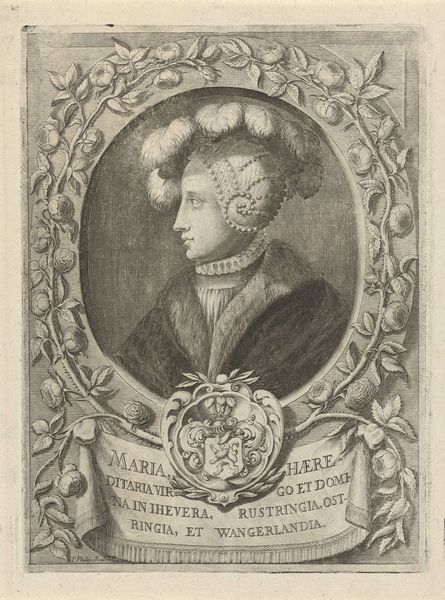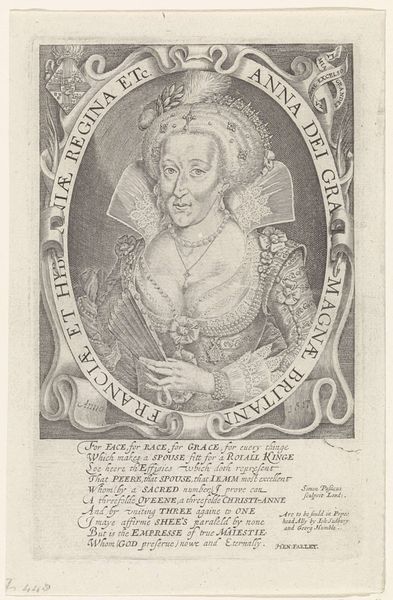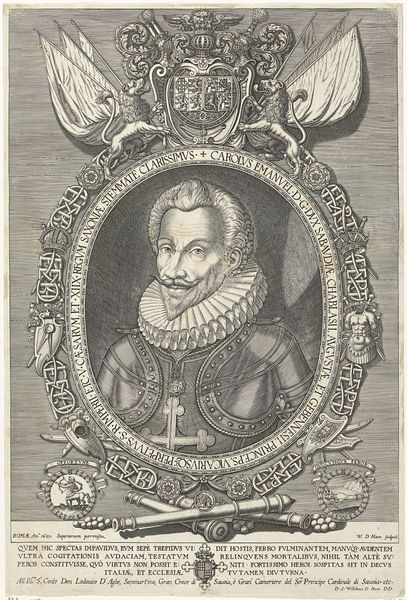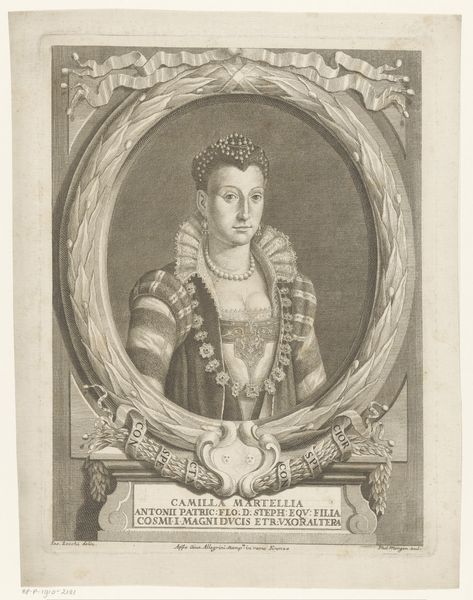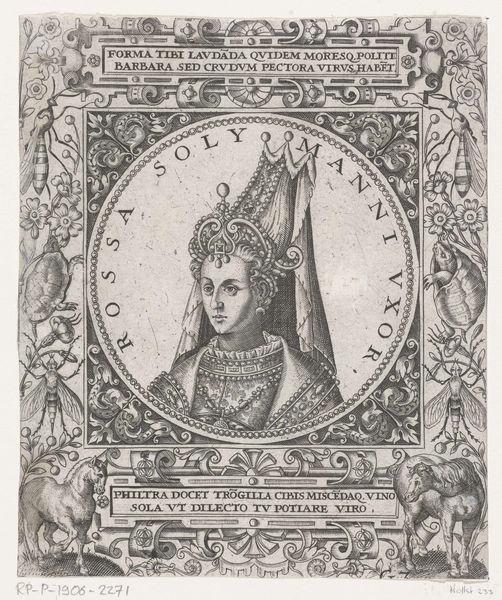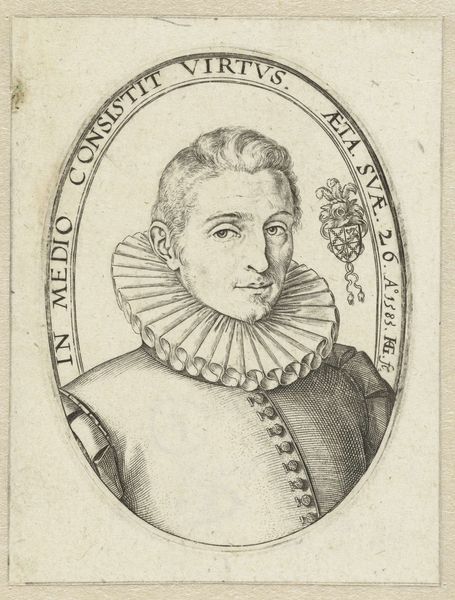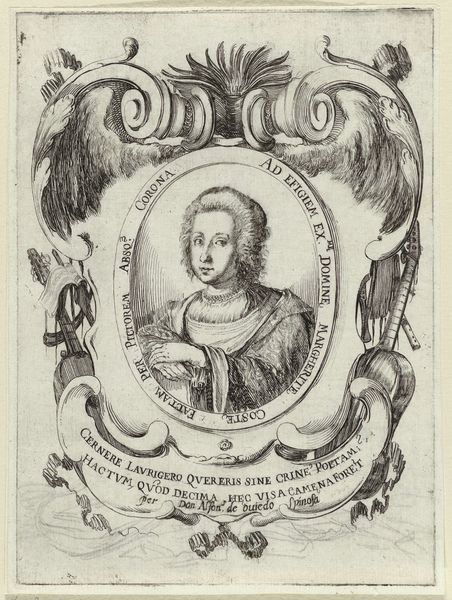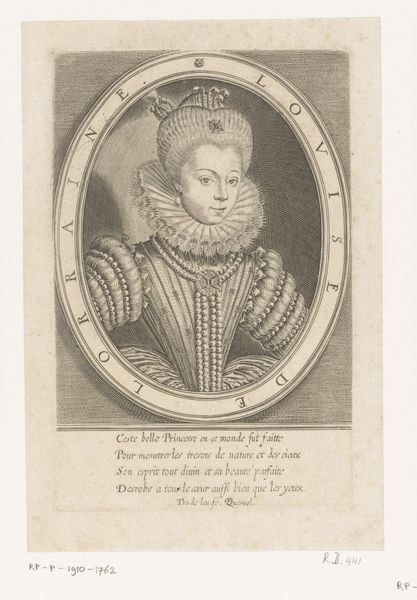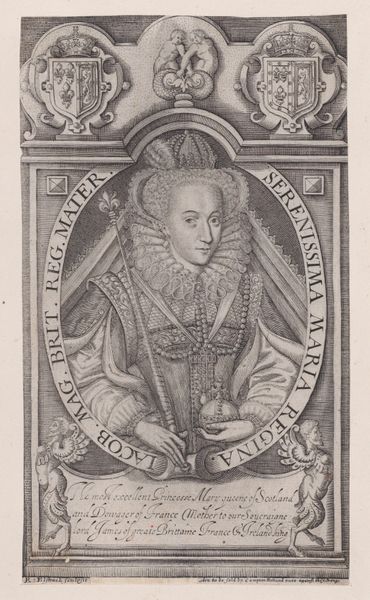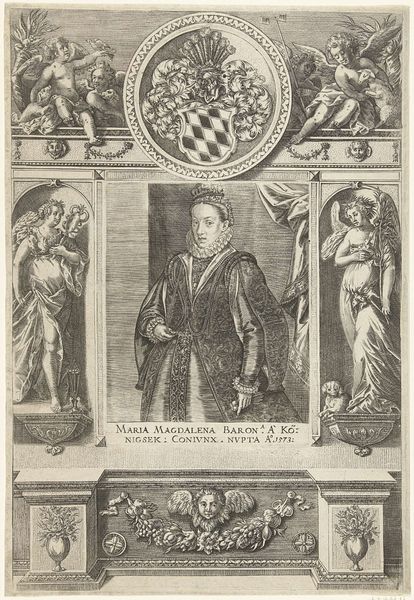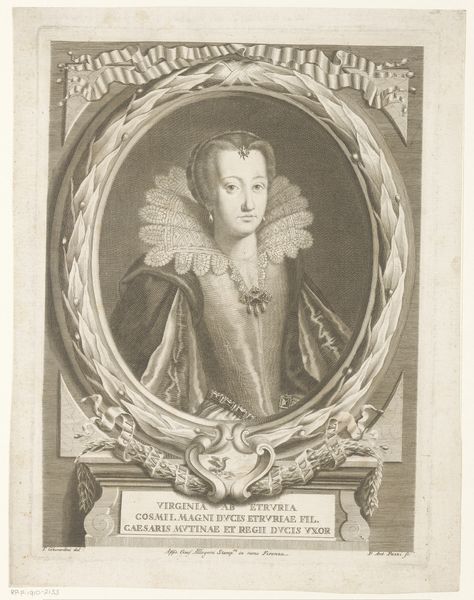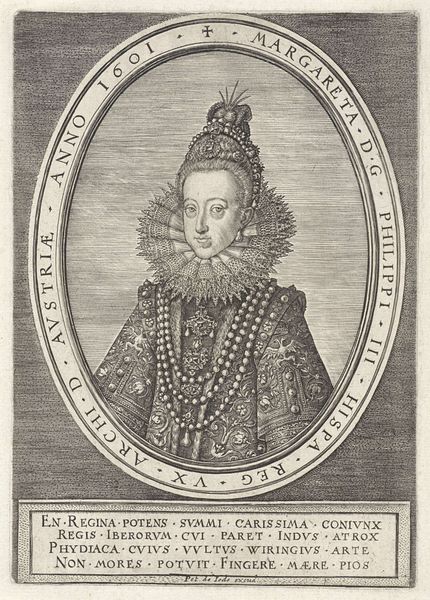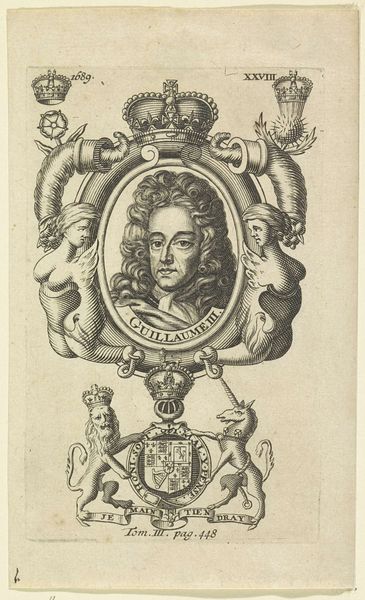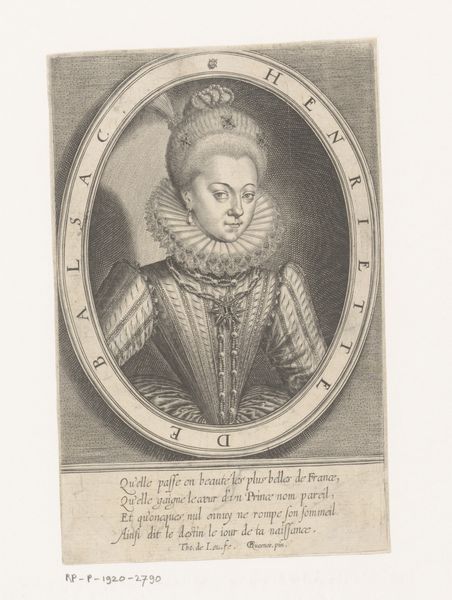
engraving
#
portrait
#
baroque
#
pen drawing
#
history-painting
#
engraving
Dimensions: height 183 mm, width 117 mm
Copyright: Rijks Museum: Open Domain
Editor: This is "Portret van Isabella Clara Eugenia," an engraving done sometime between 1616 and 1621 by Renold Elstrack. I’m immediately struck by the formality of the portrait, the rigid pose, the ornate dress… what can you tell me about this image in relation to its historical context? Curator: The formality you observe is highly intentional. These portraits were crucial instruments of power. Isabella Clara Eugenia was the daughter of the King of Spain and, from 1598 until 1621, sovereign of the Spanish Netherlands. How do you think this engraving functioned in portraying her? Editor: I imagine it served as propaganda, showing her wealth, power, and status, particularly because engravings allowed for wide distribution. Curator: Exactly! The very act of creating and disseminating images of Isabella solidified her image and reinforced her authority. Consider, too, the power dynamics inherent in image creation during this era. Who had access to these images, and what messages were they designed to convey about her rule and Spain's influence in the region? Think about the target audience. Editor: I hadn't considered the target audience in that detail, assuming it was a broad public. But maybe it was more strategic, geared toward solidifying power among specific elite groups or allies? Curator: Precisely. Also, consider how the selection and presentation of the sitter contributes to the narratives being constructed. Each choice – the attire, the setting, even the angle of her gaze – serves a rhetorical purpose. Can you imagine what story this was designed to convey during times of turbulence? Editor: This really shifts my perception. I’m seeing how what seems like just a portrait becomes this carefully constructed message about power and control in a specific historical and political situation. Curator: Yes. It highlights how art wasn't just something aesthetically pleasing but actively participated in the politics of the time.
Comments
No comments
Be the first to comment and join the conversation on the ultimate creative platform.
